Path Spread
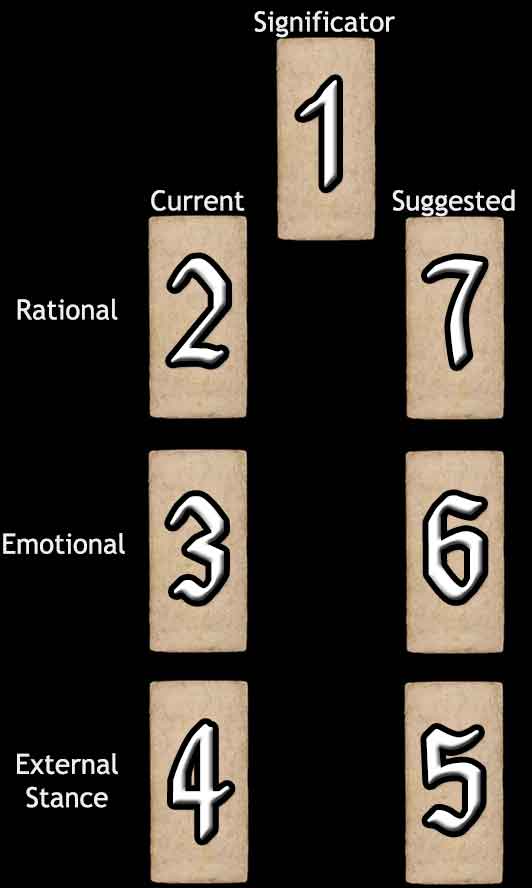
Difficulty: Easy
For the Path reading, one asks for suggestions how to behave properly to achieve a desired result. The Current column represents how the reader has been acting, and the Suggestedcolumn suggests how they should act to achieve a certain goal. The chart-like spread uses the standard three levels: Rational, Emotional, and External Stance (how one projects oneself outwardly). When comparing the Current and Suggested cards, the most important thing is to notice the differences between the two cards. It is these differences which hint at the behaviours that should be altered.
Card #1 is the significator, the card which should reflect the nature of the query and/or the desired outcome.
Card #2 shows the way the reader is and has been thinking. Card #7 suggests how to change the way one thinks to serve themselves better.
Card #3 suggests the reader's emotional attitude. Though it may seem difficult to manipulate one's own emotions, it can be done if one puts their mind to it. For example, acting a certain way such as smiling intently for a few minutes will lead the emotions to follow. When a person tries this, as silly as the exercise seems, they find this to evoke the emotion of happiness. For this reading, one should try to make themselves feel the way that Card #6 suggests.
External Stance means how one acts outwardly, how they hope others see them. Card #4 is about how the reader has been acting, while #5 indicates how they should act outwardly, for other people's sake. It is the differences between these cards that hint at what behaviour patterns should be altered.
Your Path Reading
Current |
The Significator 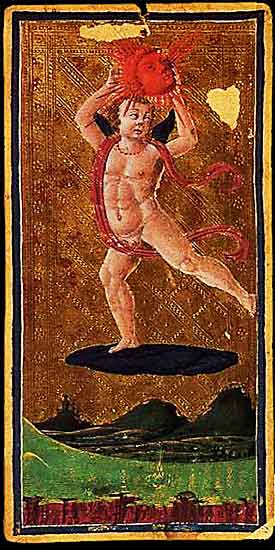 XIX – The Sun |
Suggested |
|
Thought |
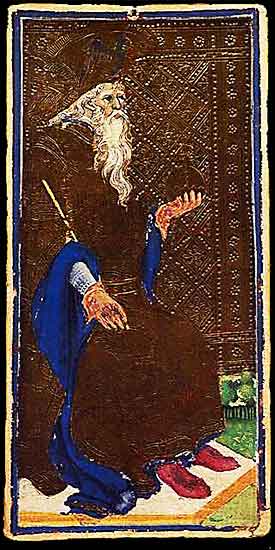 IV – The Emperor |
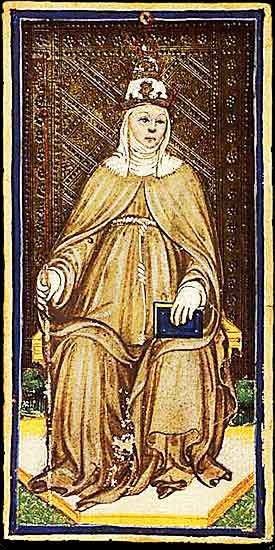 II – The Popess |
|
Emotion |
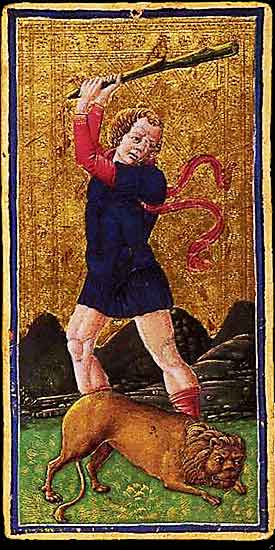 XI – Strength |
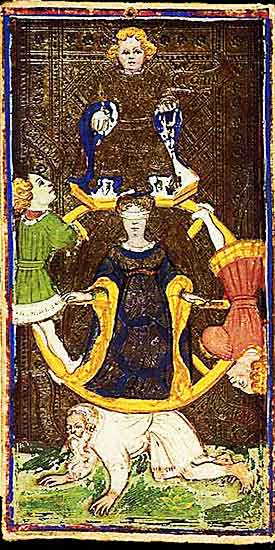 X – The Wheel of Fortune |
|
External Stance |
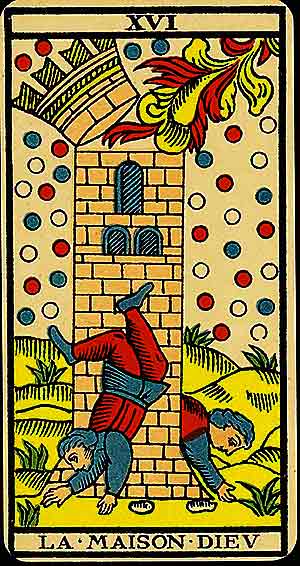 XVI – The Tower (Lost card, substituted here) |
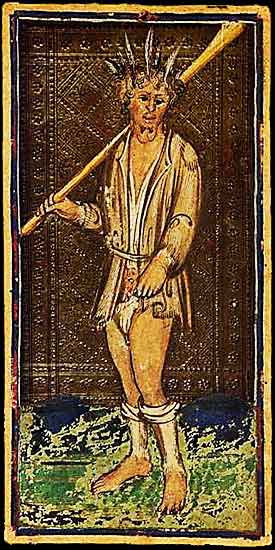 0 – The Fool |

The Significator
XIX – The Sun
The Sun represents vitality, clarity, and joyful achievement. It signifies success, enlightenment, and the unyielding energy of optimism and truth.
Symbolism: The child holding the radiant red head is a symbol of pure, untainted joy and triumph. The energetic movement of the figure contrasts with the calm, golden background, reflecting the vitality and dynamic energy of the Sun. This is a card of achievement, where obstacles are overcome through innocence, optimism, and a radiant spirit.
In Relationships: The Sun brings clarity and happiness. It suggests a time of positivity, joy, and mutual growth, where the light of truth shines on all interactions.
In Work: Success and fulfilment are on the horizon. The Sun encourages you to take confident action and bask in the warmth of your accomplishments.
Spiritually: Enlightenment and clarity. The Sun symbolises spiritual illumination, urging you to embrace your true self and the divine light within you.
When ill-dignified: Overconfidence, arrogance, or an inability to see things clearly. The Sun reversed may signal excess or an inflated ego, blinding one to the truth.

Current Thoughts
IV – The Emperor
The Emperor symbolises structure, authority, and stability. He represents the power of rules and order to create security and success, though sometimes at the expense of flexibility.
Symbolism: Seated upright with a sceptre and orb, the Emperor exudes control and dominion. His luxurious robes and the golden background emphasise his regal and unshakable power. His stillness reflects his role as a protector of order and enforcer of discipline.
In Relationships: A relationship built on structure and commitment. It can suggest the presence of a protective partner or the need to establish boundaries.
In Work: Leadership, organisation, and discipline are essential for achieving success. The Emperor encourages taking control and assuming responsibility.
Spiritually: The Emperor teaches the importance of structure and discipline in spiritual practice, encouraging grounded growth.
When ill-dignified: Tyranny, rigidity, or abuse of power. It warns against controlling behaviours or excessive adherence to rules.

Suggested Thoughts
II – The Popess
The Popess signifies intuition, mystery, and hidden wisdom. She represents the need to look inward and trust one's inner voice while respecting the unknown and unseen.
Symbolism: Her veil and book symbolise the sacred mysteries she guards. The golden background elevates her presence, while her fancy robes reflect the complexity of her spiritual knowledge. Her composed demeanour conveys her role as a keeper of divine truths.
In Relationships: A time to trust your instincts. The Popess may suggest unspoken feelings or the need for patience.
In Work: Hidden opportunities or knowledge may come to light. Use intuition and discretion when making decisions.
Spiritually: A call to explore inner wisdom and the mysteries of life. Trust the subtle guidance of intuition.
When ill-dignified: Secrets, deception, or an overreliance on logic at the expense of intuition.

Current Emotions
XI – Strength
Strength symbolises courage, patience, and the mastery of inner power. It reflects the triumph of compassion and self-control over brute force.
Symbolism: The figure's calm restraint of the lion reflects the balance of strength and gentleness. Her finely detailed garments and the rendering of the lion's mane reflect Renaissance artistry, while the golden background elevates the scene to a symbolic level.
In Relationships: A time to practise patience and understanding. Strength signals harmony through compassion.
In Work: Success through persistence and confidence. Strength encourages inner resolve rather than aggressive tactics.
Spiritually: Strength represents mastering the ego and cultivating inner peace through compassion.
When ill-dignified: Aggression, self-doubt, or weakness. It warns against succumbing to fear or forceful behaviours.

Suggested Emotions
X – The Wheel of Fortune
The Wheel of Fortune signifies cycles, fate, and the ever-changing nature of life. It reminds us of the importance of adaptability and acceptance in the face of change.
Symbolism: Figures ascending and descending on the wheel represent the ups and downs of life. The patterns add richness to the composition, while the golden background underscores the divine and inevitable nature of change.
In Relationships: A turning point in relationships, whether for better or worse. The Wheel reminds us to embrace change.
In Work: Unexpected opportunities or setbacks. It advises adaptability and resilience in navigating shifting circumstances.
Spiritually: The Wheel teaches surrender to the cycles of life and faith in the greater plan of the universe.
When ill-dignified: Resistance to change, bad luck, or repeating cycles. It warns against clinging to the past or fearing the future.

Current External Stance
XVI – The Tower (Lost card, substituted here)
This card no longer exists, so the Marseille version is filling in. The Tower symbolises upheaval, sudden change, and the destruction of false structures. It heralds moments of revelation that, while shocking, clear the way for growth and truth.
Symbolism: The lightning bolt represents divine intervention shattering illusions and falsehoods. The crumbling tower signifies the collapse of unstable foundations. The falling figures illustrate vulnerability and the inevitability of change, while the broken shield reflects the fragility of ego and human constructs. Despite the chaos, the background suggests this upheaval is necessary for enlightenment.
In Relationships: The Tower signals a sudden shake-up, possibly a breakup or revelation. Though painful, it clears the way for honesty and authenticity.
In Work: Expect abrupt changes, such as a job loss or major restructuring. Though unsettling, this card pushes you to re-evaluate your priorities and rebuild stronger foundations.
Spiritually: The Tower challenges false beliefs and spiritual stagnation. A moment of crisis will lead to profound insight and transformation.
When ill-dignified: When reversed or ill-dignified, the Tower suggests avoiding necessary change, delaying the inevitable, or clinging to a crumbling situation. It warns that resisting transformation can lead to prolonged suffering.

Suggested External Stance
0 – The Fool
The Fool symbolises new beginnings, innocence, and an open-hearted journey. He represents the spirit of adventure and trust in the unknown, unburdened by experiences or material concerns. His path is one of discovery, where curiosity leads the way.
Symbolism: The vagabond's tattered clothing reflects detachment from societal norms, while his staff and bundle suggest minimal baggage—both physical and emotional. The golden background highlights his eternal and universal journey. His carefree, open-mouthed expression conveys both the naivety of youth and the wisdom of freedom from expectations.
In Relationships: A signal to take risks or approach relationships with spontaneity and trust. It cautions against naivety or reckless behaviour.
In Work: An invitation to embrace a new path or project with an open mind. The Fool encourages experimentation and trust in one's instincts.
Spiritually: The Fool represents faith in the journey ahead and the courage to step into the unknown. He invites the seeker to trust the divine flow.
When ill-dignified: Foolishness, poor judgement, or recklessness. It warns against ignoring practicalities or rushing ahead blindly.